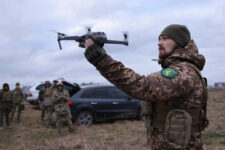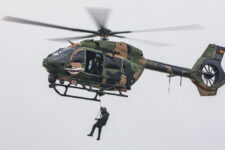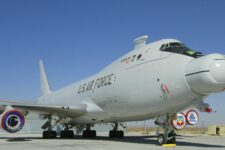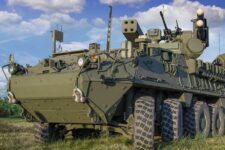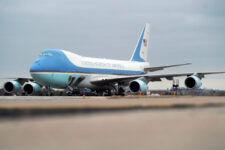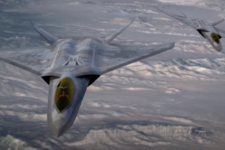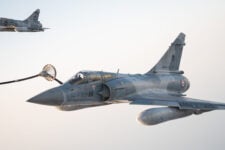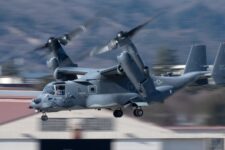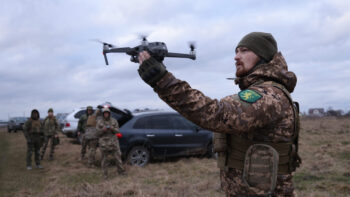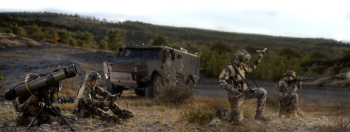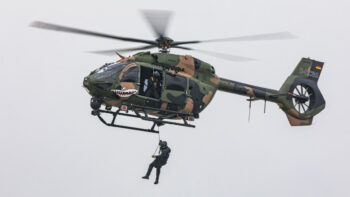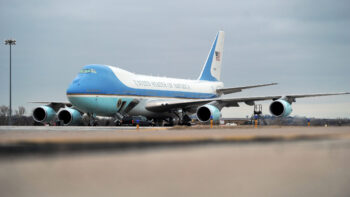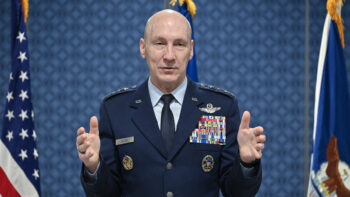
Andrew Hunter, assistant secretary of the Air Force for acquisition, technology and logistics, speaks during the panel discussion “Answering the Warfighters’ Needs” at the Air and Space Forces Association 2023 Warfare Symposium in Aurora, Colo., March 7, 2023. (U.S. Air Force photo by Eric Dietrich)
AFA WARFARE SYMPOSIUM — Industry giants like Northrop Grumman and Boeing may have lost billions of dollars recently on their fixed-price deals with the Pentagon, but the Air Force is not moving away from the contracting mechanism even as corporate resistance to the model mounts, according to the service’s top weapons buyer.
Speaking during a discussion hosted by the Atlantic Council on Friday, Andrew Hunter expressed concern that companies have had to absorb huge losses on fixed-price programs as inflation and supply chain woes have pushed costs higher in recent years. However, the Air Force’s acquisition czar emphasized that the fixed-price model should remain in place especially when combined with a different acquisition approach.
“I do care,” Hunter said when asked about losses on programs like Boeing’s KC-46A Pegasus air refueling tanker whose charges have topped $7 billion. “Without industry’s capabilities, we’re never going to get to where we have to go. So we want our industry partners to be there for us in the long run, and we do not want to undermine their long run viability by the way in which we approach programs.”
In the past, Hunter explained, companies were broadly incentivized to bid “aggressively” on programs to win decades of business. As a result, contractors were at risk of bleeding cash especially on fixed-price deals if costs rose on the bids they offered.
But Hunter said a “next-gen approach” affords an opportunity to do things differently. Efforts like the Air Force’s Collaborative Combat Aircraft (CCA) drone wingmen are now adopting a model of “continuous competition,” which means that a vendor has another chance at an on-ramp down the road if it loses out in an earlier contest. Companies won’t need to bid “super aggressively” in response to this approach, he said, “because that next competition is just around the corner.”
It’s also worth noting some differences among fixed-price agreements. A key problem for Boeing, for example, is that it signed on to fixed-price contracts for development stages of various programs. As a result, the aerospace giant is on the hook for cost overruns on programs like the KC-46A and T-7A training jet that are driven by developmental woes and other factors like supply chain pressures.
Northrop’s recent $1.2 billion loss on the B-21 Raider, on the other hand, is not tied to the stealth bomber’s development — that portion of the program is covered by a cost-plus contract, where a vendor typically gets a fixed fee and the Pentagon is on the hook for rising prices. Instead, the company’s trouble is that the Raider’s early production lots are covered by a fixed-price deal, meaning that the plane’s price tag doesn’t budge even if it costs Northrop more to make it due to higher labor and supply costs.
Hunter didn’t specify whether the Air Force might rethink using fixed-price development contracts as some key industry leaders have implored. L3Harris Chief Executive Officer Chris Kubasik, for example, has said his company has passed on bids for fixed-price development contracts, joining Boeing in a boycott against the approach. Even CCA, Hunter emphasized, is not eschewing the fixed-price model altogether, which he said has been a mainstay in defense acquisitions.
“Fixed-price contracting has been a tool in defense acquisition from day one. It is the way commercial industry does it all the time everywhere. There’s nothing wrong with fixed-price contracts,” he said. “But if we set up structures where we incentivize people to do things that they later regret, and that we regret, that’s not good, and we don’t want to do that.
“But we are going to enforce our contracts,” he added, later stressing that “we’re not getting rid of fixed-price contracts.”
Elsewhere during the discussion, Hunter noted that officials are making extensive use of government reference architectures for military tech. These will essentially allow a “plug-and-play” ability for current hardware and future upgrades on next-gen systems, he said, describing the situation as setting a common standard like Bluetooth. The “advanced mission systems government reference architecture,” as Hunter called it, is being implemented “on multiple new build platforms.”
CCA is illustrative of the importance of investing in architectures, Hunter said, noting that industry has pitched in their own money as well for the effort. Five companies — Boeing, General Atomics Aeronautical Systems, Lockheed Martin, Northrop Grumman and startup Anduril — are currently competing to field the CCA drone wingmen for the Air Force. A down select that will eliminate at least some of those vendors is expected to occur by the summer, a source previously told Breaking Defense.
